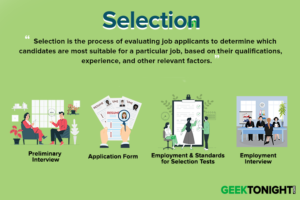What is Planned Change?
Planned change or developmental change is undertaken to improve the current way of operating. It is a calculated change, initiated to achieve a certain desirable output/performance and to make the organization more responsive to internal and external demands.
- Enhancing employees’ communication skills
- technical expertise
- building teams
- restructuring the organization
- introducing new technologies
- introducing new products and services
- challenging the incentive system
- improving employee welfare measures and the like fall into this category.
Table of Content
This type of change, where the future state is being consciously chosen, is not as threatening. However, it does require a system/subsystem level (techno-social) support to survive.
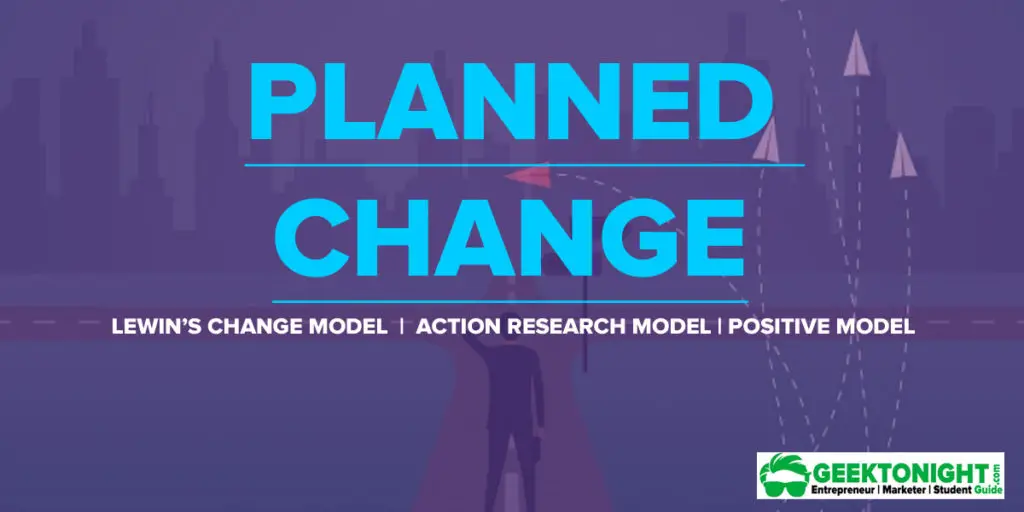
Read: What is Organizational Development | OD Meaning, Concept
What is Change?
Change is a constant, a thread woven into the fabric of our personal and professional lives.
Change occurs within our world and beyond — in national and international events, in the physical environment, in the way organizations are structured and conduct their business, in political and socioeconomic problems and solutions, and in societal norms and values.
What is Change Management?
Change management is a systematic approach to dealing with the transition or transformation of an organization’s goals, processes or technologies.
Theory of Planned Change
Frameworks describe the activities that must take place to initiate and carry out the successful organizational change.
Three theory of planned change:
Lewin’s Change Model
One of the earliest models of planned change was provided by Kurt Lewin. Lewin’s model provides a general framework for understanding organizational change.
Kurt Lewin suggests that efforts to bring about planned change in an organisation should approach change as a multistage process. This model of planned change is made up of three steps:
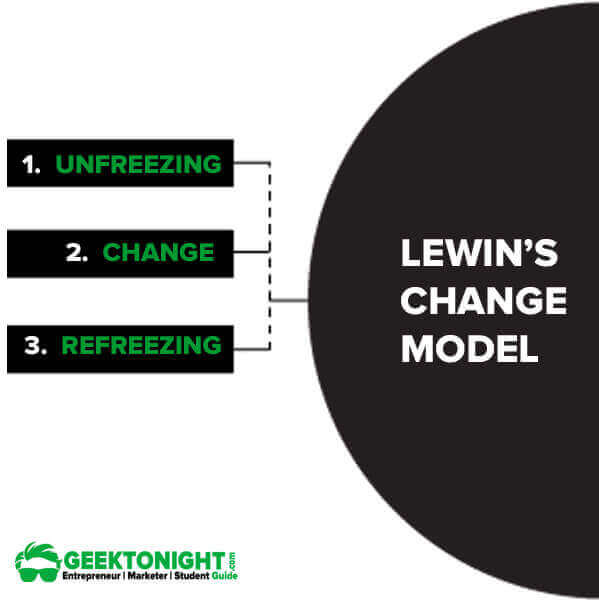
Unfreezing
This step usually involves reducing those forces maintaining the organization’s behaviour at its present level. Unfreezing is sometimes accomplished through the process of “psychological disconfirmation”
By introducing information that shows discrepancies between behaviors desired by organization members and those behaviours currently exhibited, members can be motivated to engage in change activities.
Moving
This step shifts the behaviour of the organization, department, or individual to a new level. It involves intervening in the system to develop new behaviors, values, and attitudes through changes in organizational structures and processes.
Refreezing
This step stabilizes the organization at a new state of equilibrium. It is frequently accomplished through the use of supporting mechanisms that reinforce the new organizational state, such as organizational culture, rewards, and structures.
Action Research Model
Action research model is traditionally aimed both at helping specific organizations implement planned change and at developing more general knowledge that can be applied to other settings.
It places heavy emphasis on data gathering and diagnosis prior to action planning and implementation, as well as careful evaluation of results after the action, is taken.
The Action Research Model involves eight steps for planned change management.
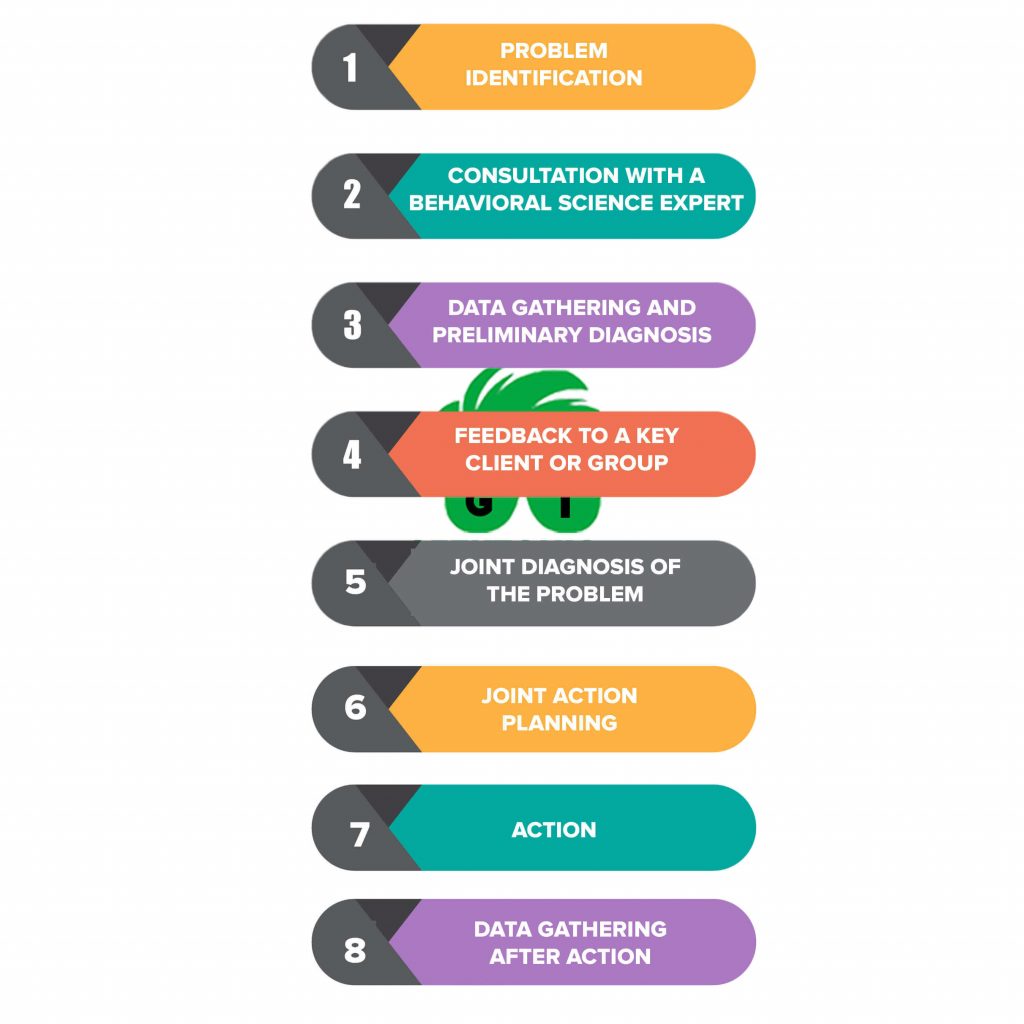
Problem Identification
This stage usually begins when an executive, senses that the organization has one or more problems that might be solved with the help of an OD practitioner.
Consultation with a Behavioral Science Expert
During the initial contact, the OD practitioner and the client carefully assess each other.
Data Gathering and Preliminary Diagnosis
This step is usually completed by the OD practitioner, often in conjunction with organization members. It involves gathering appropriate information and analyzing it to determine the underlying causes of organizational problems.
Feedback to a Key Client or Group
Because action research is a collaborative activity, the diagnostic data are fed back to the client, usually in a group or work team meeting.
The feedback step, in which members are given the information gathered by the OD practitioner, helps them determine the strengths and weaknesses of the organization or unit under study.
Joint Diagnosis of the Problem
At this point, members discuss the feedback and explore with the OD practitioner whether they want to work on identified problems.
A close interrelationship exists among data gathering, feedback, and diagnosis because the consultant summarizes the basic data from the client members and presents the data to them for validation and further diagnosis.
Joint Action Planning
Next, the OD practitioner and the client members jointly agree on further actions to be taken. At this stage, the specific action to be taken depends on the culture, technology, and environment of the organization; the diagnosis of the problem; and the time and expense of the intervention.
Action
This stage involves the actual change from one organizational state to another. It may include installing new methods and procedures, reorganizing structures and work designs, and reinforcing new behaviours.
Such actions typically cannot be implemented immediately but require a transition period as the organization moves from the present to a desired future state.
Data Gathering After Action
Because action research is a cyclical process, data must also be gathered after the action has been taken to measure and determine the effects of the action and to feed the results back to the organization. This, in turn, may lead to re-diagnosis and new action.
Positive Model
The positive model focuses on what the organization is doing right. It helps members understand their organization when it is working at its best and builds off those capabilities to achieve even better results.
The positive model focuses on what the organization is doing right. It helps members understand their organization when it is working at its best and builds off those capabilities to achieve even better results.
5 Stages of Positive Model are:
- Initiate the Inquiry
- Inquire into Best Practices
- Discover the Themes
- Envision a Preferred Future
- Design and Deliver Ways to Create the Future
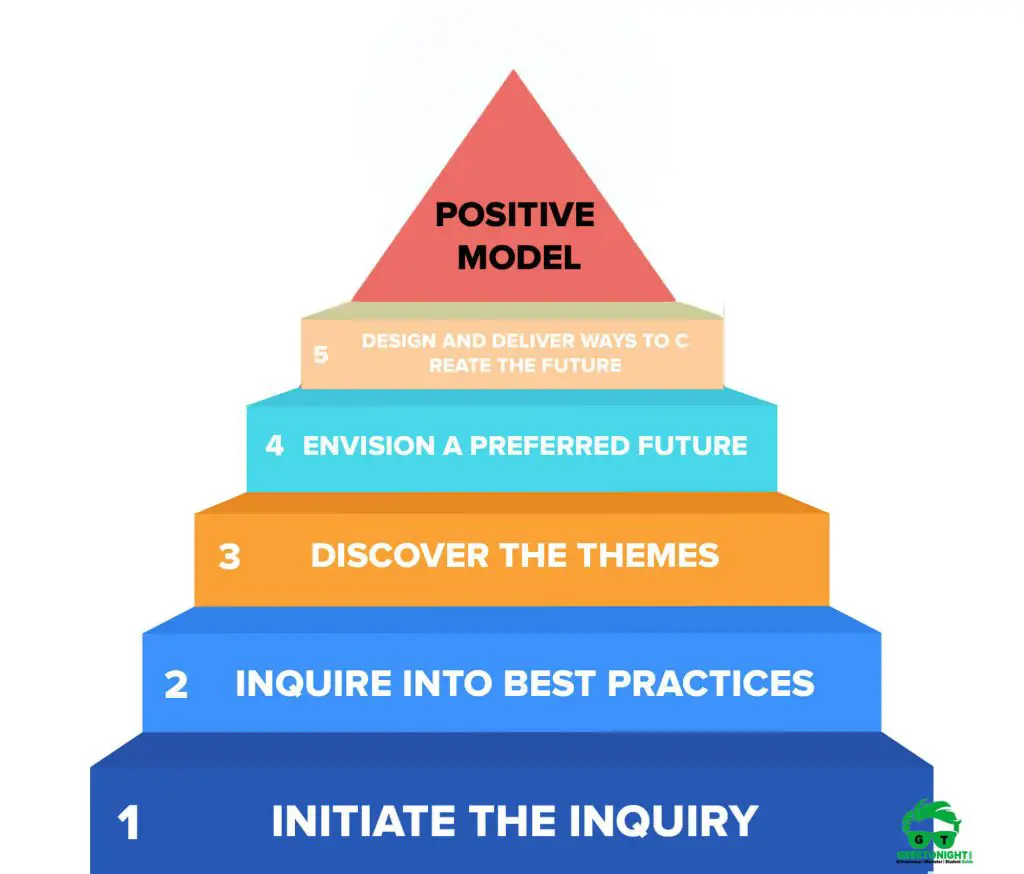
Initiate the Inquiry
This first phase determines the subject of change. It emphasizes member involvement to identify the organizational issue they have the most energy to address.
For example, members can choose to look for successful male-female collaboration (as opposed to sexual discrimination), instances of customer satisfaction (as opposed to customer dissatisfaction)
Inquire into Best Practices
This phase involves gathering information about the “best of what is” in the organization.
For example, If the topic is organizational innovation, then members help to develop an interview protocol that collects stories of new ideas that were developed and implemented in the organization.
Discover the Themes
In this third phase, members examine the stories, both large and small, to identify a set of themes representing the common dimensions of people’s experiences.
For example, the stories of innovation may contain themes about how managers gave people the freedom to explore a new idea, the support organization members received from their coworkers, or how the exposure to customers sparked creative thinking.
Envision a Preferred Future
Members then examine the identified themes, challenge the status quo, and describe a compelling future.
Based on the organization’s successful past, members collectively visualize the organization’s future and develop “possibility propositions”—statements that bridge the organization’s current best practices with ideal possibilities for future organizing.
Design and Deliver Ways to Create the Future
The final phase involves the design and delivery of ways to create the future. It describes the activities and creates the plans necessary to bring about the vision. It proceeds to action and assessment phases similar to those of action research described previously.
Comparisons of Planned Change Models
- All three approaches emphasize the application of behavioural science knowledge, involve organization members in the change process to varying degrees, and recognize that any interaction between a consultant and an organization constitutes an intervention that may affect the organization.
- Lewin’s change model differs from the other two in that it focuses on the general process of planned change, rather than on specific OD activities.
- Lewin’s model and the action research model differ from the positive approach in terms of the level of involvement of the participants and the focus of change.
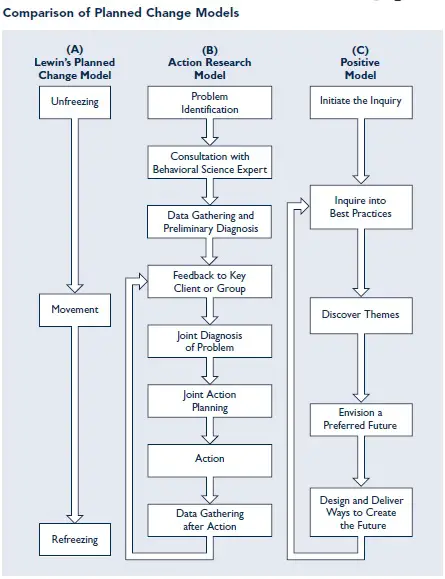
General Model of Planned Change
The three models of planned change suggest a general framework for planned change as shown in Figure.
The framework describes the four basic activities that practitioners and organization members jointly carry out in organization development.
- Entering and Contracting
- Diagnosing
- Planning and Implementing Change
- Evaluating and Institutionalizing Change
Entering and Contracting
The first set of activities in planned change concerns entering and contracting. Those events help managers decide whether they want to engage further in a planned change program and to commit resources to such a process.
Diagnosing
In this stage of planned change, the client system is carefully studied. Diagnosis can focus on understanding organizational problems, including their causes and consequences, or on collecting stories about the organization’s positive attributes.
The diagnostic process is one of the most important activities in OD. It includes choosing an appropriate model for understanding the organization and gathering, analyzing, and feeding back information to managers and organization members about the problems or opportunities that exist.
Planning and Implementing Change
In this stage, organization members and practitioners jointly plan and implement OD interventions. They design interventions to achieve the organization’s vision or goals and make action plans to implement them.
Evaluating and Institutionalizing Change
The final stage in planned change involves evaluating the effects of the intervention and managing the institutionalization of successful change programs so they persist. Feedback to organization members about the intervention’s results provides information about whether the changes should be continued, modified, or suspended.
Reference
- Cummings, Thomas G., & Worley, Christopher G. (2000), Organisation
Development and Change, 7th ed., South-Western Educational Publishing. - French, Wendell L., and Cecil H. (1996), Development: Behavioral Science Interventions for Organisation Improvement (5th Edition), New Delhi, India: Prentice-Hall of India.
- Singh, Kavita, Organisation Change and Development, Excel Books Private Limited.
- https://www.customwritings.com/research-papers.html – a professional research paper writing service
Human Resources Tutorial
(Click on Topic to Read)
Human Resource Management
Go On, Share & Help your Friend
Did we miss something in Organization Development Tutorial or You want something More? Come on! Tell us what you think about our post on Planned Change | Theories & Models, Process | Organizational Development in the comments section and Share this post with your friends.
Human Resources Tutorial
(Click on Topic to Read)



